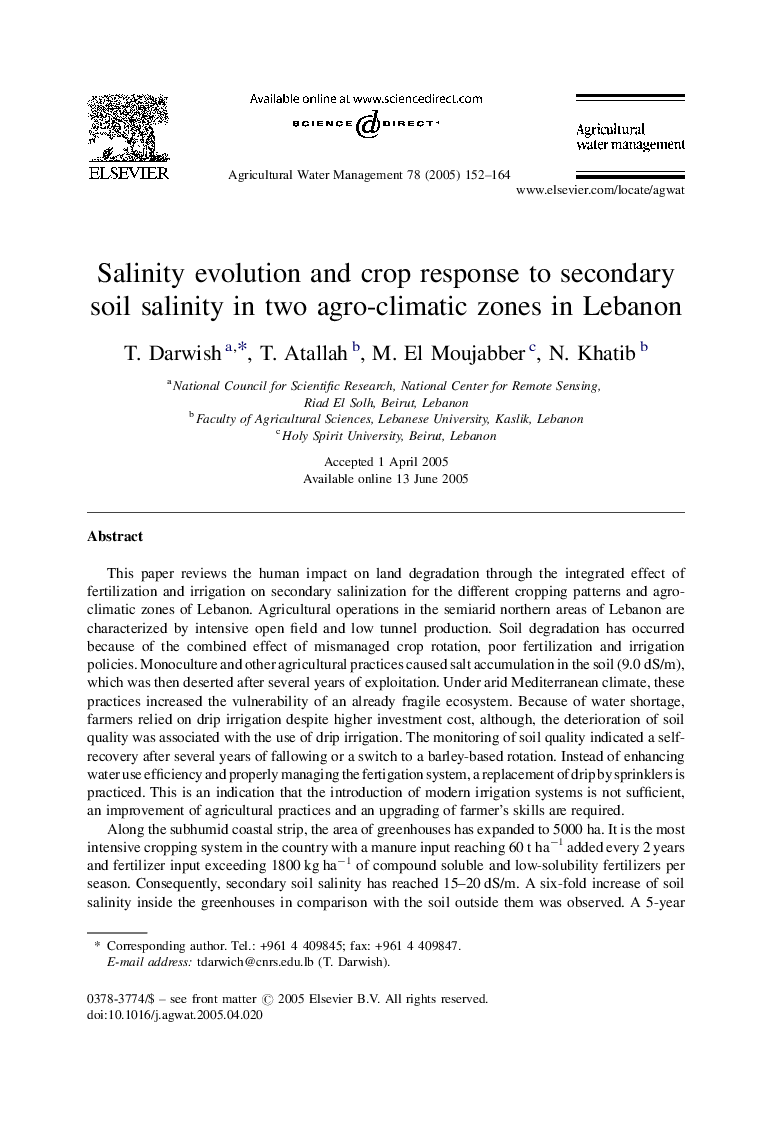| Article ID | Journal | Published Year | Pages | File Type |
|---|---|---|---|---|
| 9467353 | Agricultural Water Management | 2005 | 13 Pages |
Abstract
Along the subhumid coastal strip, the area of greenhouses has expanded to 5000 ha. It is the most intensive cropping system in the country with a manure input reaching 60 t haâ1 added every 2 years and fertilizer input exceeding 1800 kg haâ1 of compound soluble and low-solubility fertilizers per season. Consequently, secondary soil salinity has reached 15-20 dS/m. A six-fold increase of soil salinity inside the greenhouses in comparison with the soil outside them was observed. A 5-year monitoring of the status of groundwater and soil on the Lebanese coast showed that the deterioration of soil quality is also linked to the mismanagement of fertilizer input and irrigation with low quality waters. Several zones are irrigated with well water which was subjected to seawater intrusion. In the southern coastal region, water salinity fluctuated around 3 dS/m. In regularly sampled wells, the chlorine content explained only 12% of the variation in total salinity of irrigation water (ECw). ECw explained 34% of soil salinity (ECe). Indeed, the level of ECw cannot justify the extent and seasonal fluctuation of ECe, which showed a peak of 50 dS/m. Replacing drip by sprinklers is not the proper solution in an area with severe shortage in fresh water. Instead, improving the management of water and nutrients inputs and increasing their use efficiency is a necessary step to conserve the limited natural resources in the country.
Related Topics
Life Sciences
Agricultural and Biological Sciences
Agronomy and Crop Science
Authors
T. Darwish, T. Atallah, M. El Moujabber, N. Khatib,
